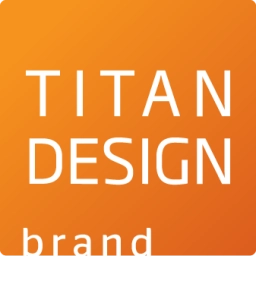01. Research
Regardless of the project scope, we consistently conduct research before beginning the design phase. This approach is crucial as it ensures we meet our client’s specific requirements.
Target Audience
Researching the target audience is essential for design and marketing to understand the demographics, behaviors, preferences, and needs of the specific group the project aims to reach.
Logo Styles
We explore various logo styles based on our client’s preferences to gather inspiration for the design phase.
Current Trends
Design trends such as minimalism, maximalism, sustainability, and interdisciplinary collaboration shape the design world. Designers incorporate new technologies and influences from various fields to create innovative work, emphasizing the importance of staying updated for effective design.
Demographics
Reviewing competitors’ branding and design through their websites, marketing materials, and social media provides valuable insights into industry trends and customer preferences.
02. Choose a Color Palette
Selecting a color palette is a key step in logo design because colors carry significant psychological implications and emotional responses, which can profoundly affect how the audience perceives the brand. The right color choices can enhance brand recognition, convey brand values, and differentiate the brand from the competition. Colors also influence mood and feelings, making it essential to choose a palette that aligns with the brand’s personality and the message it intends to convey, ensuring the logo resonates effectively with the target audience and supports the brand’s marketing goals.
03. Sketching
Sketching is a crucial step in logo design as it allows for quick exploration of ideas and concepts without the constraints of digital tools. This free-form approach enables designers to rapidly experiment with different shapes, symbols, and layouts, leading to more creative and original results.
Tips
Sometimes experimenting with different types of paper can spark your creative process. For instance, sketching in a dotted journal can enhance your creativity by connecting the dots, while using an isometric grid can inspire the creation of unique shapes.
Remember When Sketching
I. Your environment is important; a clear space will make your mind clear.
II. Your sketches don’t need to be pretty.
III. Take your time and don’t rush the process.
04. Digitization
Here’s the fun part: bringing your sketches to life. Digitizing the logo is a crucial step in the logo design process for several reasons, as it transforms the logo from a concept or sketch into a versatile, digital asset that can be used across various media.
Things to Keep in Mind
Scalability
A digitized logo can be scaled to any size without losing quality. This is particularly important to ensure the logo looks sharp and clear whether it’s on a small business card or a large billboard. Vector formats, such as SVG or AI, are often used for logos because they can be resized without degradation.
Consistency
Digitizing the logo ensures consistency across all brand materials. A digital logo can be precisely replicated in terms of colors, dimensions, and details, maintaining brand identity across different platforms and materials, from websites and digital platforms to printed materials like brochures and packaging.
Legal Protection
To digitize the logo and register it as a trademark, you need a digital file that meets specific standards. Including the digital logo in legal documentation is key to protecting the brand’s identity from counterfeiting or misuse.
05. Logo Presentation
Creating the logo is just the beginning. It’s essential to show the client how their logo can be integrated into real-world applications. Sometimes it can be challenging to imagine the potential of your logo when you see just a black-and-white icon.
Explaining your choices to the client ensures they understand the thought process behind the elements, colors, and symbols you’ve incorporated. This transparency helps align everyone’s vision and ensures the design resonates with the target audience. Providing this insight encourages better communication and collaboration, leading to a more successful and impactful final product.
06. Revisions
After presenting the logo design, the client may request revisions. This is the perfect opportunity to make any final adjustments and add the finishing touches for final approval.
Don’t forget to consider all the client’s wishes and requirements and integrate them into the logo design.
07. Finalization
Once your client has given the green light to their logo, it’s time to wrap things up.
Below are the final deliverables you need to provide to your client.
Final Approval
Obtain final approval from the client.
File Formats
Prepare the final logo in various file formats (e.g., AI, PNG, JPEG) for different purposes.
Brand Guidelines
Create a brand guideline document outlining how the logo should be used, including color codes, dos and don’ts, and typography.
Grammar Check
Ensure all spelling mistakes are checked.
Color Files
Make sure you provide all transparent, colored, and black-and-white files.
File Naming
Ensure you correctly name your files before sending them to the client. This will help with organization and easy interaction.













